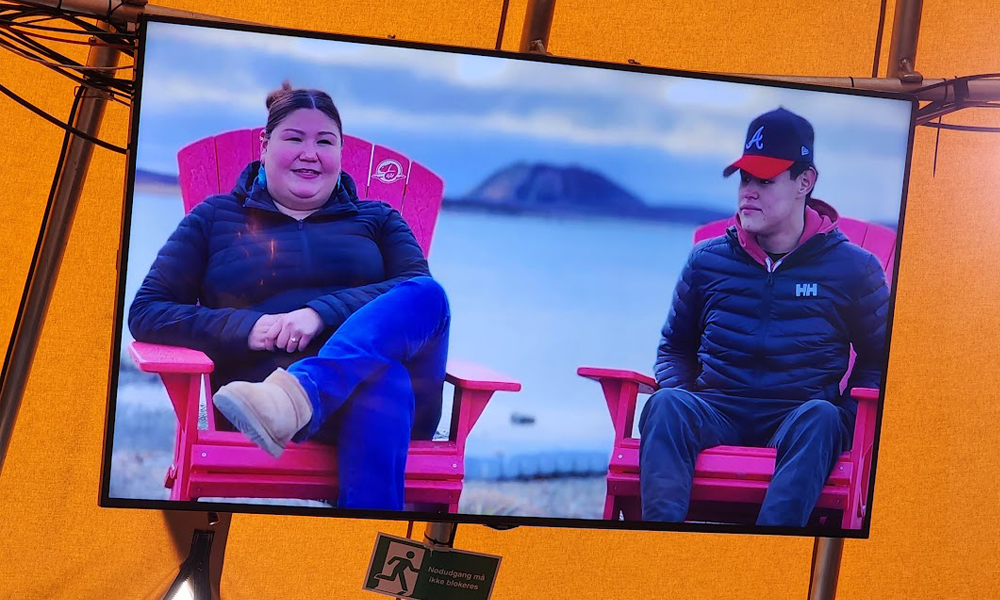Participatory Videos & Photovoice
Overview
Participatory Video enables groups or communities to create their own films. The aim is to bring people together to explore issues, voice concerns, or tell stories. It promotes collaboration, action, and collective ownership of communication by empowering participants with multiple means of expression. Through participatory video, groups and communities can communicate their needs and ideas to researchers, decision-makers, and/or other stakeholders.
Example
InsightShare provides comprehensive materials and resources about participatory video, including research and guides for implementation. Toolkits and guides are available; Insights Into Participatory Video: Handbook for the Field is the most popular introduction to the method.
- https://insightshare.org/methods/
- https://insightshare.org/resources/
- https://insightshare.org/resources/insights-into-participatory-video-a-handbook-for-the-field/
- https://www.youtube.com/watch?v=dqVPJt2XmKs
The HERD project, which might align with the methodological toolbox. Here is that behind-the-scenes video that also shares a summary of the below pieces in video format.
Literature
- Lemaire, I. & Lunch, C. Using Participatory Video for Monitoring and Evaluation. InsightShare.
- Lunch, C. & Roberts, T. Participatory video [encyclopedia entry].
- Shaw, J. Using Participatory Video for Action Research.
- Borish, D., Cunsolo, A., Mauro, I., Harper, S. L. 2021. Moving Images, Moving Methods: Advancing Documentary Film for Qualitative Research. International Journal of Qualitative Methods Vol 20:1-14 DOI: 10.1177/16094069211013646
- Borish, D., Cunsolo, A., Mauro, I., Harper, S. L. 2021.What is Video-based Qualitative Analysis? www.inuitvoicesherd.com
- Borish, D., Cunsolo, A., Mauro, I., Dewey C, Harper, S. L. 2021. Notions of Motion: A guide to exploring data and creating storytelling outputs through a video-based qualitative analysis. Submotted as a supplementay file in Moving images, moving methods: Advancing documentary film for qualitative research. International
Journal of Qualitative Methods. In Press.
Learn from our Team! Watch the recorded session titled ‘Tools for Participatory Video and Film-making in Research,’ which took place on December 11, 2023. This two-hour webinar features a diverse panel of experts sharing their unique perspectives on using video and film in documenting Indigenous Knowledge. The session includes an exploration of planning, filming, processing, co-creating, and producing impactful video projects.
Presenters:
Alejandro Argumedo – Association Andes/Ărramăt T1 Co-Lead/Quechua Scholar and Activist (Cusco, Peru)
Art Napoleon – Saulteau First Nation/Indigenous land user, scholar, musician, activist, TV writer, actor, producer and ILPBP Co-Applicant
Dr. Chi Suwichan – Karen scholar, musician, activist and ILPBP Collaborator (Northern Thailand)
Dr. David Borish – Filmmaker/ Alley/Torngat Wildlife, Plants and Fisheries Secretariat and ILPBP Collaborator
Cliquez ici pour regarder en Français!
Overview
Photovoice is a community-based participatory visual research method that uses participant photography to guide interviews. Typically, participants are given cameras or use their smartphones to document realities, share perspectives, and raise awareness about issues. As a participatory methodology, it prioritizes researcher/participant collaboration on research objectives, the co-production of knowledge, and ensuring research outcomes benefit participant communities. As with participatory video, the outputs of photovoice projects can be shared as advocacy tools in policy spaces, galleries, public events, or other spaces.
Example
Through photography, community members in Zimbabwe were supported to define priority issues, draw upon their personal experiences of Food Security and Livelihoods activities, and measure the impact of activities against their expectations, fears and aspirations for the programme, thereby providing qualitative insight and building individual ‘stories of change’. https://photovoice.org/picturing-progress-zrcs-food-security-and-livelihoods/
Literature
- Carroll, Clint, Eva Garroutte, Carolyn Noonan, and Dedra Buchwald. 2018. “Using PhotoVoice to Promote Land Conservation and Indigenous Well-Being in Oklahoma.” EcoHealth. 15:450-461.
- Maclean, K., & Woodward, E. (2013). Photovoice Evaluated: An Appropriate Visual Methodology for A boriginal Water Resource Research. Geographical Research, 51(1), 94-105.
- Mitchell, F. M., Billiot, S., & Lechuga-Peña, S. (2020). Utilizing Photovoice to Support Indigenous Accounts of Environmental Change and Injustice. Genealogy, 4(2), 51.
- Spiegel, S. J., Thomas, S., O’Neill, K., Brondgeest, C., Thomas, J., Beltran, J., Hunt, T., & Yassi, A. (2020). Visual Storytelling, Intergenerational Environmental Justice and Indigenous Sovereignty: Exploring Images and Stories amid a Contested Oil Pipeline Project. International Journal of Environmental Research and Public Health, 17(7), 2362.
- Arowosegbe, J. O. (2017). Indigenous African Jurisprudential Thoughts on the Concept of Justice: A Reconstruction through Yoruba Proverbs. Journal of African Law, 61(2), 155–170. https://login.ezproxy.library.ualberta.ca/login?url=https://search.ebscohost.com/login.aspx?direct=true&db=edshol&AN=edshol.hein.journals.jaflaw61.12&site=eds-live&scope=site
Learn from our Team! Watch the recorded session titled ‘Ărramăt PhotoVoice Project & Tips for Photography,’ which took place on November 18, 2024. This one-hour webinar shares insights about PhotoVoice as a research method and Ărramăt’s PhotoVoice Project. As well as tips for
capturing great photos of your research!
Presenters:
Aminata Diallo: from the Kel Tamasheq (Tuareg) and Peul (Fulani) communities in Mali, is a Mandela Rhodes Scholar pursuing an MPhil in Justice and Transformation, specializing in Transitional Justice and Indigenous practices for restorative justice.
Abby D’Souza: Communication Coordinator for the Ărramăt Project.
Christoper White: an Edmonton-based Métis video producer, has over a decade of experience working with Indigenous communities, non-profit organizations, and governments to develop and share impactful stories.
Kristine Wray: a Métis Nation of Alberta member with a PhD in Environmental Sociology.
Click here for the PDF of the presentation (English)
Cliquez ici pour regarder en français!

